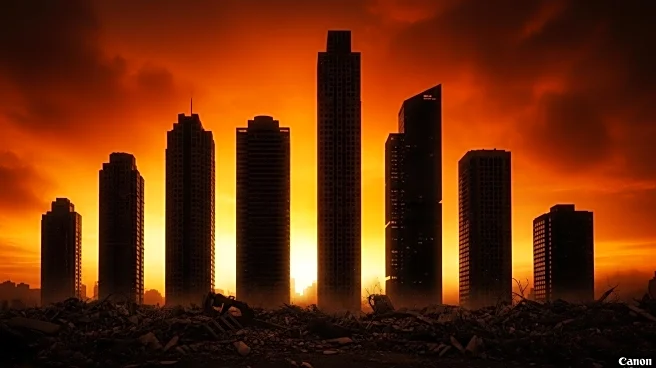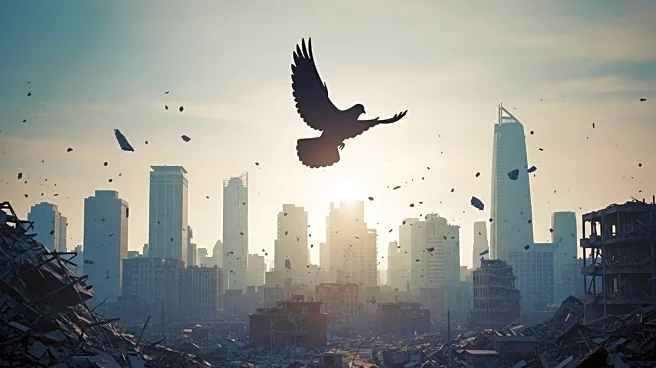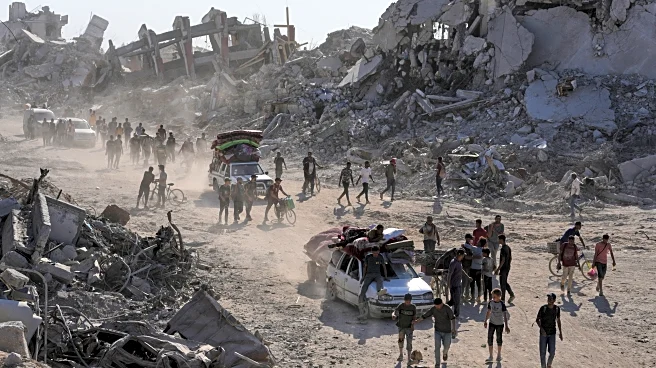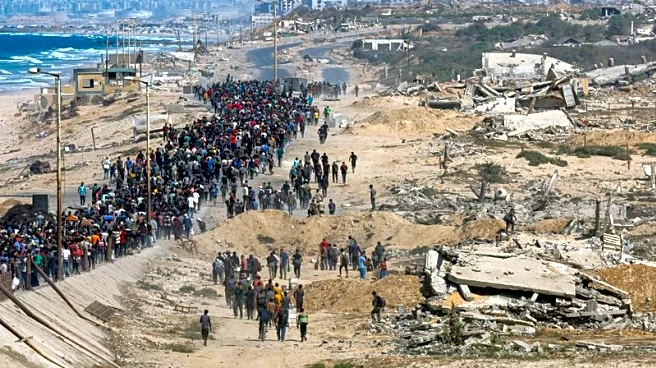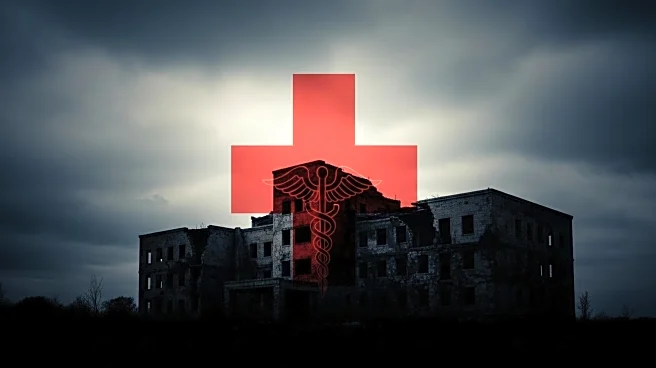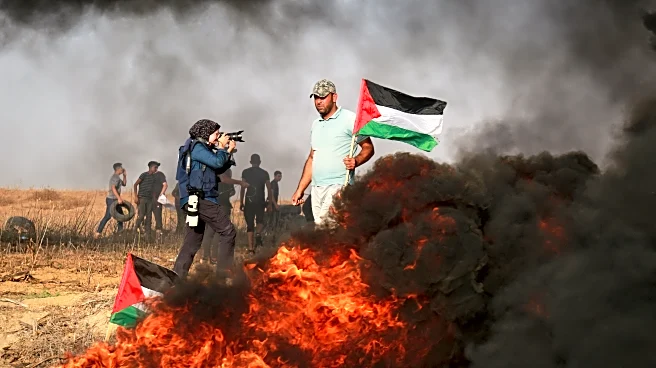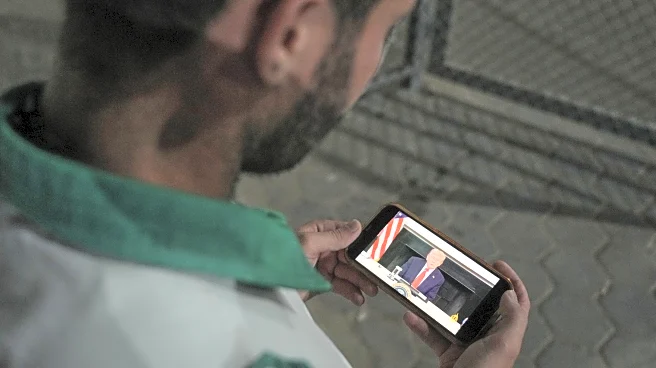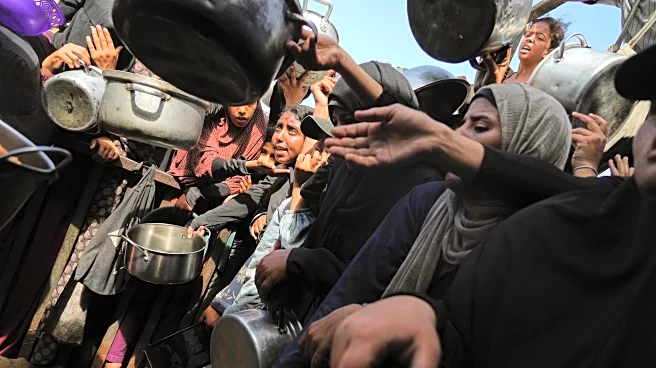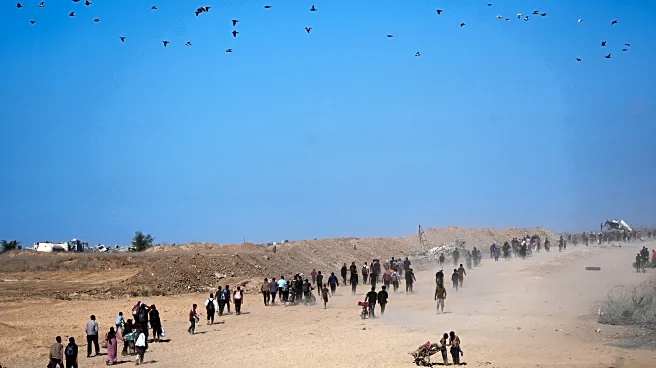What's Happening?
Drone footage has captured the extensive destruction in Gaza City following two years of conflict, as a ceasefire holds in its second day. The video, taken by the Associated Press, shows the Tal al-Hawa neighborhood with few buildings still standing, and roads covered in concrete dust. The United Nations estimates that 83% of structures in Gaza City are either destroyed or damaged, with 61 million tons of debris needing removal across the Gaza Strip. The devastation is likened to the volume of 25 Eiffel Towers, much of it potentially toxic. Returning residents express shock at the level of destruction, with many finding their homes uninhabitable as winter approaches.
Why It's Important?
The destruction in Gaza City highlights the severe humanitarian crisis facing the region. The extensive damage will require over $50 billion for reconstruction, according to the World Bank. The environmental impact is also significant, with the loss of vegetation and crops. The ceasefire provides a temporary reprieve, but the long-term recovery will be challenging. The situation underscores the need for international support and effective governance to rebuild and provide for the more than 2 million Palestinians affected.
What's Next?
If the ceasefire holds, efforts to assess and address the full extent of the damage will continue. International aid and support will be crucial in the rebuilding process. The political dynamics in the region may shift as stakeholders negotiate the terms of peace and reconstruction. The focus will be on ensuring stability and preventing further conflict, while addressing the immediate needs of the displaced population.
Beyond the Headlines
The destruction in Gaza raises ethical and legal questions about the conduct of war and the protection of civilians. The environmental damage also poses long-term challenges for sustainability and health. The rebuilding process will require careful planning to avoid further harm and ensure equitable distribution of resources.

